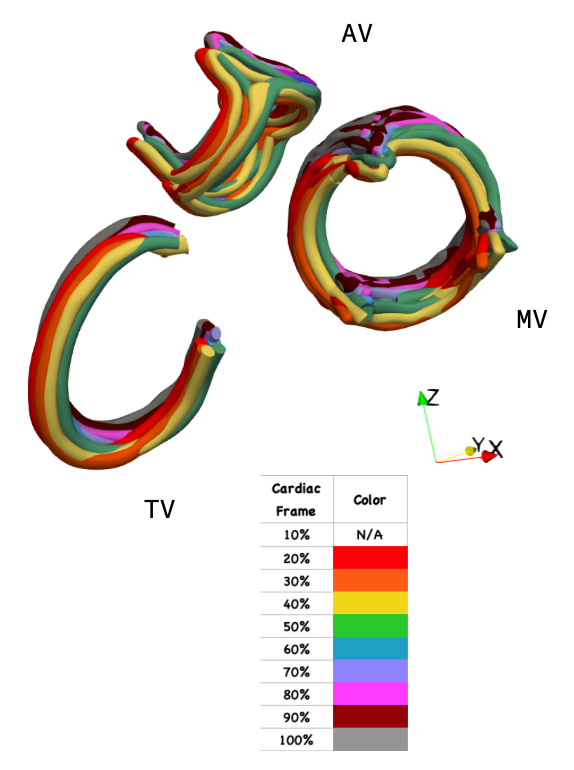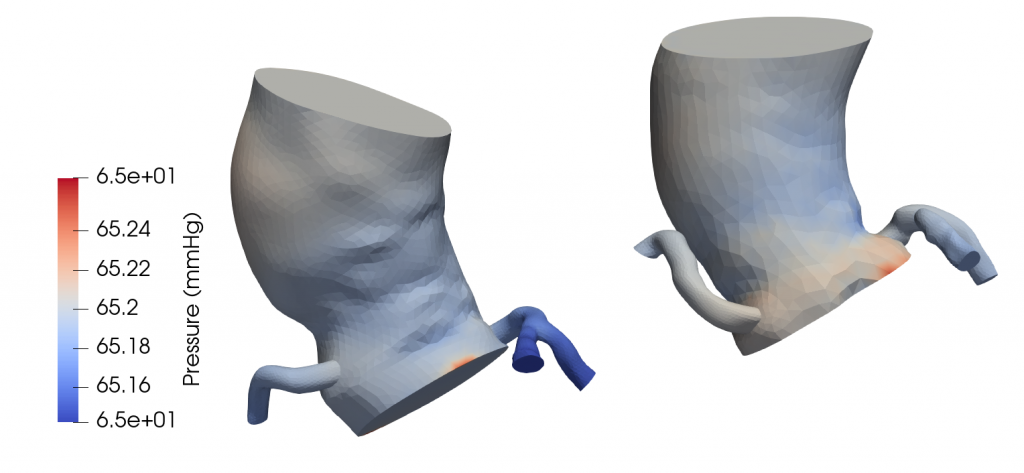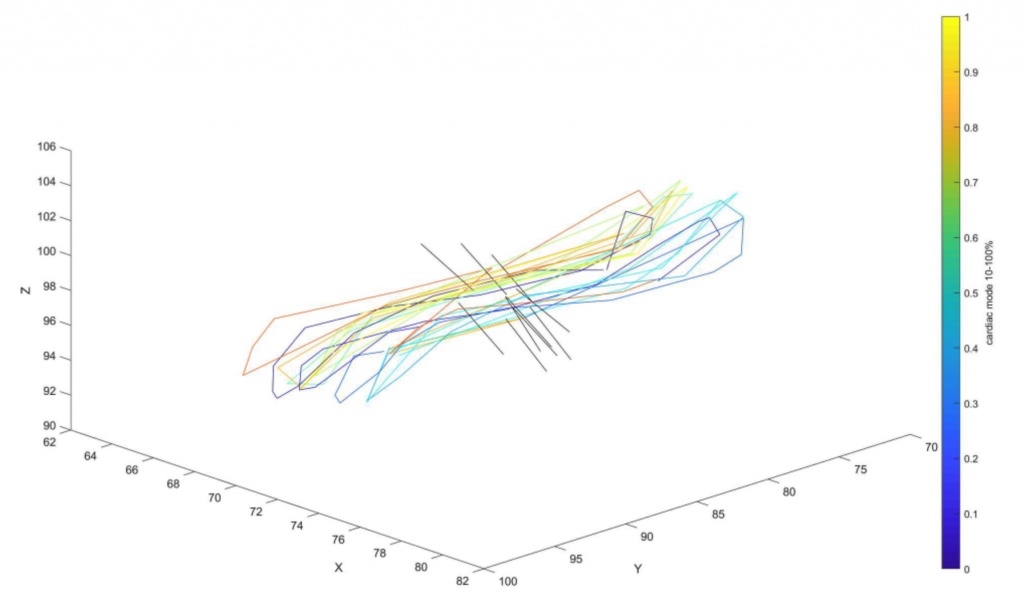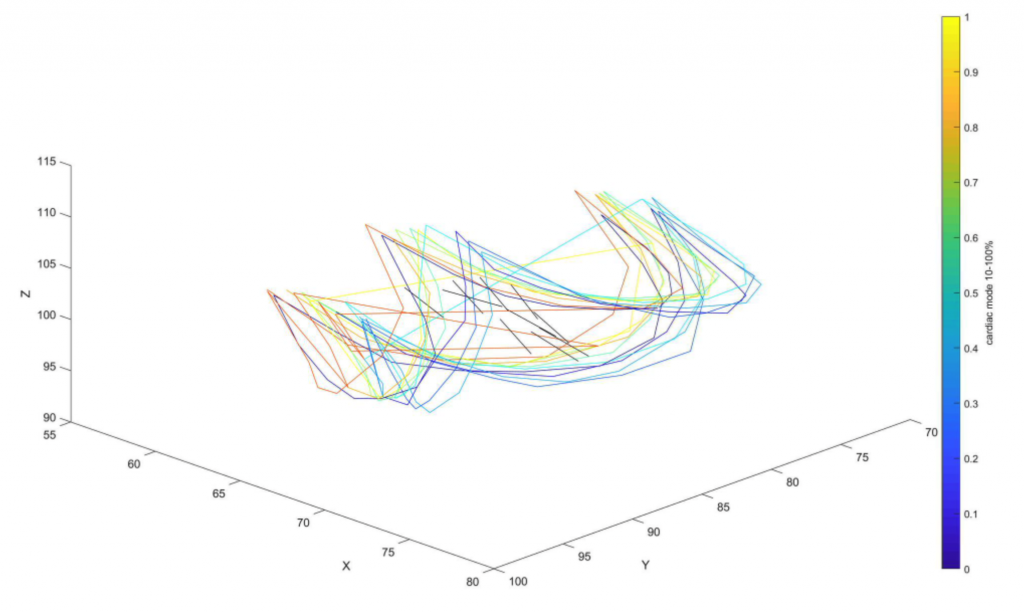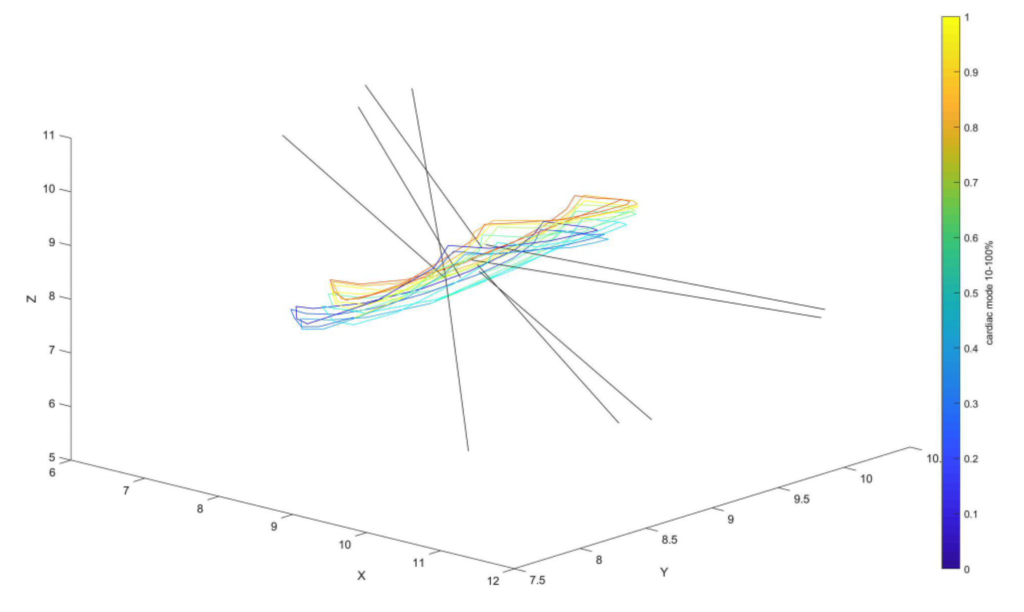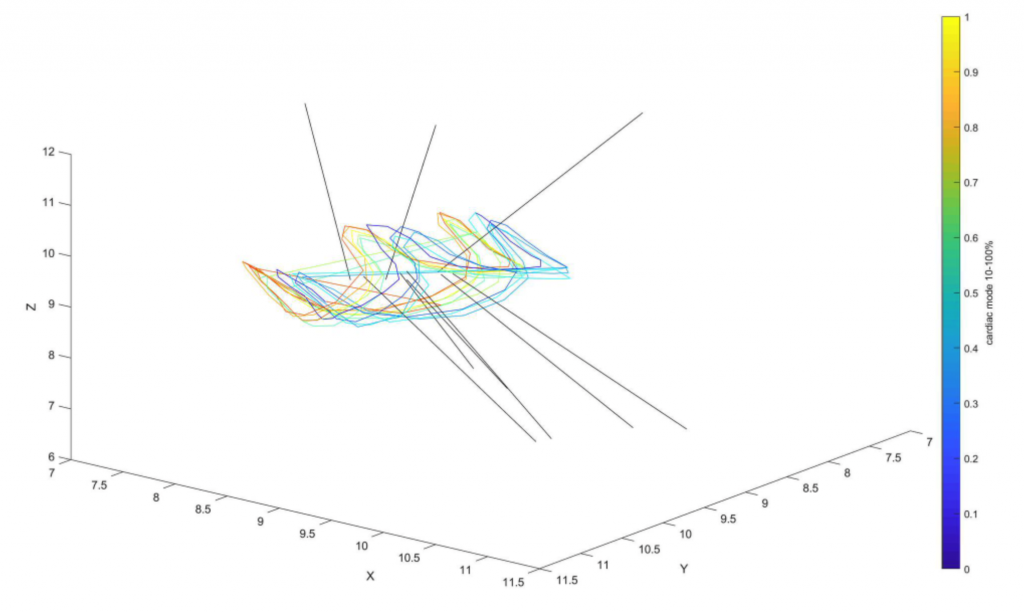Team members: Jessica Blair (Alumni), Nia Sanchez (Alumni), Thaotho Nguyen, and Justin Mel Cortez
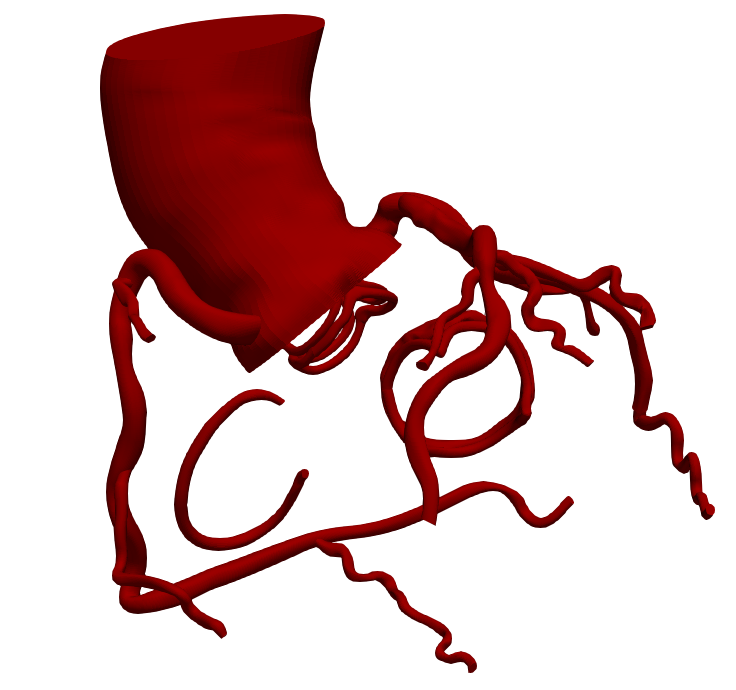
Research Update
Students presented most recent research of TAV patient at CSULB’s 33rd Research Competition. This patient had three valves replaced, and observance of blood flow and blood volume is essential to understanding how well the bioprosthetic valves work.
As of September 2021, the Heart Valve Team was accepted into CVID.
Cardiovascular Research – The Full Story
Students Jessica Blair and Nia Sanchez initially began this team in August of 2019. Recently, Thaotho Nguyen and Justin Mel Cortez joined this team. All members are motivated in their research of valve replacements due to constant valve failure in patients. Valve failure is caused by diseases such as valve regurgitation, valve stenosis, degeneration of leaflet cusps, valvular disease, and other factors that can lead to failure. Beginning in August 2019, the students spent a few months researching different surgical procedures, such as transcatheter or standard replacement, to discern the differences between various valve materials and valve types. They reviewed the mechanical differences in design between tissue, or bioprosthetic, and mechanical, or artificial. After months of research and noticing a trend of articles preferring bioprosthetic valves over mechanical due to better flow patterns and hemodynamic parameters, the students decided to focus their resources on the hemodynamic parameters portrayed in patients post-bioprosthetic valve replacement.
In collaboration with Yonsei University of Seoul, South Korea, during the month of February 2020, students were given cardiac-resolved computed tomography (CT) angiographies of ten cardiac frames for two patients who had undergone AV replacement. Each patient had their AV replaced with a different valves, either Edward Lifesciences Carpentier-Edwards (CE) Magna Pericardial Aortic Bioprosthesis (21 mm) or St. Jude Medical’s Trifecta GT Aortic Valve (21 mm). The patients were labeled as a bicuspid aortic valve (BAV) if they received Edwards Lifesciences valve, or tricuspid aortic valve (TAV) if they received St. Jude Medical’s valve. Once students received the CT images, open-source software SimVascular, ITK-SNAP, and ParaView were used to construct computational patient-specific models of all ten cardiac frames of the heart for each patient. Upon review of the two patients, students became aware of one patient, TAV, having three valves replaced, which will be mentioned later as a task for the student’s case study. The aorta, coronary arteries, and strut and ring of the AV were modeled for each cardiac frame of the two patients, for a total of twenty frames in SimVascular. SimVascular was also essential for simulation of rigid wall and deformable wall simulations during different cardiac frames, to further observe hemodynamic parameters velocity, wall shear stress, and flow oscillation. Students initially created steady wall simulations on the aorta and coronary arteries, meaning the wall of the aorta and coronary arteries did not have elastic properties. Students then creating deforming wall simulations of the aorta and coronary arteries to more accurately represent the elastic wall properties of these vessels. These models are shown below, and do not portray the full extent of modeling for the coronary arteries. ITK-SNAP was essential for modeling of one chamber of the heart, the left ventricle (LV), for both patients. Upon realization of the TAV patient, the other three chambers, the right ventricle (RV), left atrium (LA), and right atrium (RA) were modeled for all ten cardiac frames. Finally, ParaView was used to combine models from SimVascular and ITK-SNAP, and to observe wall shear stress and pressure differences during cardiac cycle of rigid wall and deforming wall, as well as deformable movements in the strut and ring correlating to affected wall shear stress and strain on the patient.
From the first round of results with rigid wall simulations, students were able to observe higher pressure during systole, or contraction, due to representation of simulations on ParaView. The BAV patient had a more constant higher pressure during systole, which could be due to leaflet degeneration or other key factors that are under review. With further analysis of simulations, the TAV patient had a more constant higher pressure during diastole, which means that leaflet degeneration could be occurring during relaxation or closure of the valve leaflets. Both instances of higher pressure could be caused by the deforming strut and rings during each cardiac frame. Instances of higher deformation was seen during the change of 100% (end of diastole) to 10% (start of systole) since the aortic valve has to compensate for the quick change of relaxation to contraction. Sudden deformation was also visualized during the end of systole and beginning of diastole, apparent in the cardiac frames of 30-40%. These quick movements can cause valve deformation and eventually need to be replaced. Bioprosthetic valves typically have an average of 10-15 year lifespan, so increasing this life span with better design aspects is one of the goals for this team. Please scroll to the bottom to see a video of the deforming strut and ring and hemodynamic parameter results of different simulations.
Simulation and Velocity Findings (Deforming Wall):
Velocity Profiles:
Wall Shear Stress Findings (Deforming Wall):
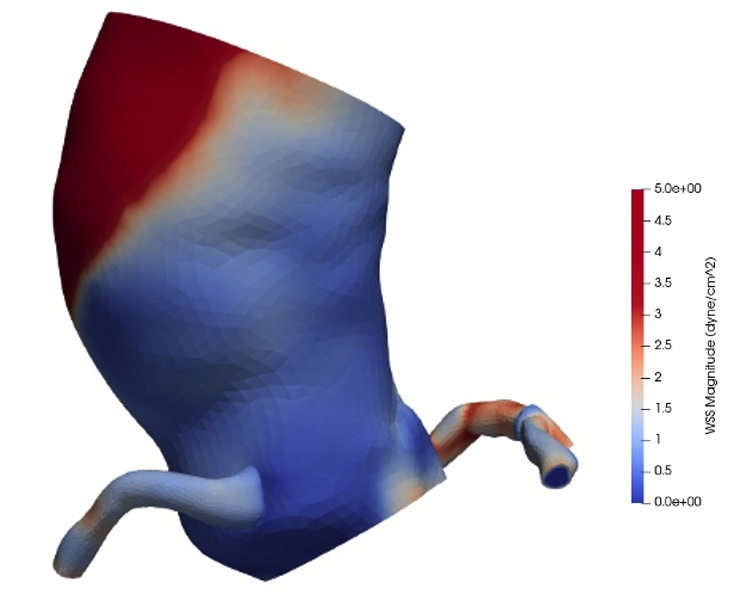
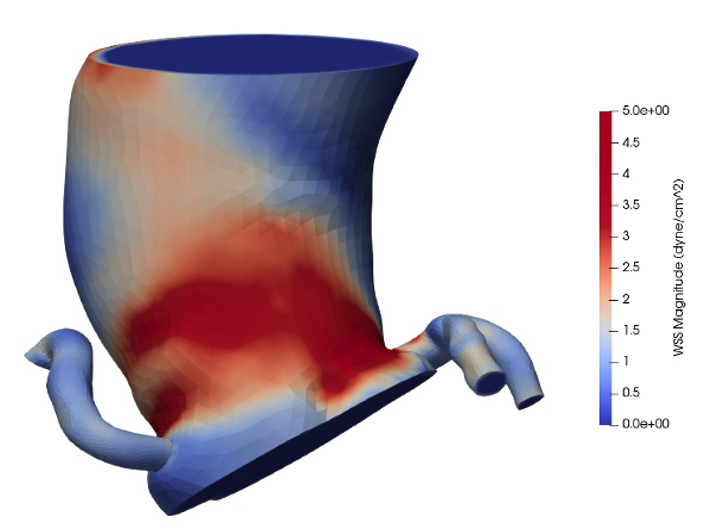
To continue, this research is now analyzing blood volume and blood flow in the TAV patient post-triple bioprosthetic valve replacement. The TAV patient has their tricuspid valve (TV) repaired with an annuloplasty ring as a reinforcement, their AV replaced, and their mitral valve (MV) replaced. This occurrence is rare, so observance of volume in any of the four chambers can help understand how each valve affected the blood flow and volume in the patient, leading to analysis of which design works more efficiently in helping a patient lead a better lifestyle. Filters applied in ITK-SNAP are used to compute volume, which will be discussed in greater detail after submission of their research to CSULB’s 33rd Annual Research Competition, in February. Adjustments were made to TAV patient’s coronary arteries and valves, shown below. Then, filters applied in ParaView were used to join the models from ITK-SNAP and SimVascular to observe animated deformation of valves along with blood volume chamber movement.
For further understanding of valve deformation, students have created code, via MATLAB, to extract geometric parameters from valve strut and ring models for observance. Observance of measurements and angle changes during the 10 cardiac frames will help analyze deformation during the cardiac cycle, and observe if each valve behaves similar to a native AV, as well as being similar in deformation to each other. Learning of this deformation via MATLAB results will help students compare to results of flow in SimVascular simulations, and will lead to further studying of valve deformation. (Scroll to the bottom for Pictures).
To correlate with this, further research will continue into observation of leaflet remodeling and strut and ring deformation effects on leaflets. The hope is to increase the lifespan for the valves to keep patients out of surgery. To further observe simulations post-operation, continued research into boundary conditions, which are used for simulations, will be conducted with deforming wall simulations, which more accurately represent the cardiac cycle. The long term goal is to contribute to design techniques for aortic valve, possibly using programs such as SolidWorks to create a design that companies can use or refer to.
As these students continue their research, they have begun to see promising results by being accepted into two conferences. ABRCMS virtual conference took place during November 2020, and CSUPERB will be taking place during January 2021. Students will also be taking place in a research competition that is taking place during March 2021. Both students will be graduating, virtually, this upcoming May 2021, and are excited for the future in cardiovascular research to further bring awareness to cardiovascular disease.
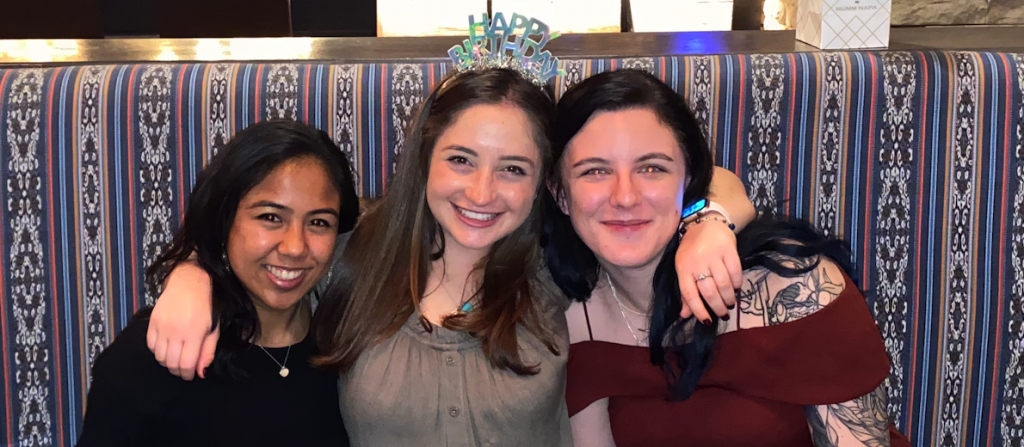
Videos and Pictures of Current Findings
